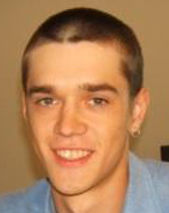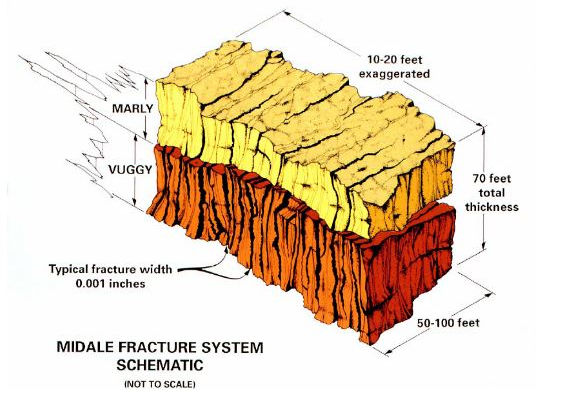Enhanced Oil & Gas Recovery and Reservoir Characterization


MSc 2008
Currently with Alberta Innovates Technology Futures
Research topic: "2- and 3-D Fracture Network Generation and Modeling Solvent Injection Using Stochastic Algorithms in Fractured Systems"
My research includes several subtopics related to fracture networks. They logically evolve as such:
1. Characterize a natural fracture network (NFN)
2. Construct a fracture network model
3. Test/validate the model with flow simulations (see Figure 1 below)
4. Study the models and evaluate alternative algorithms for fracture network modeling
5. Get a new insight into the naturally fractured reservoir performance, particularly undergoing carbon dioxide injection process.
The first task is consideration of an NFN on Midale field example (see Figure 2 below). My effort is to collect and analyze data, such as FMI logs, cores, and well test response, infer statistical and fractal characteristics of the fracture network. Different individual fracture properties such as length, height, aperture, etc. are addressed together with the system properties such as fracture density, spacing, orientation etc. The second task is to construct a reliable digital fracture network model using the aforementioned NFN characteristics. This process involves generation of 3-D computer models of fractured medium from 1-D and 2-D data available. Next step is validation of computer models by means of flow simulations. Here, simulated flow response across modeled fractured medium is compared to a real reservoir response to check the authenticity of the models. Further effort is to study the models in light of different network analysis techniques such as percolation, random walk algorithm, ANN, etc. The ultimate goal of the research is acquisition of some reliable tools for analysis and prediction of performance of naturally fractured reservoirs (NFR’s). Particular interest is in NFR under carbon dioxide injection, due to the obvious need for assessment of CO2-enhanced oil recovery and CO2 sequestration potential.
Figure 1: From FRACA, Beicip-Inc.com.
Figure 2: From "Waterflood and CO2 Flood of the Fractured Midale Field," Beliveau, D., Payne, D.A., Mundry, M., 1993.
Publications:
-
Bogatkov, D. and Babadagli, T.: “Characterization of Fracture Network System of the Midale Field,” CIPC 2007-031, CIM 58th Annual Tech. Meet., Canadian Int. Petroleum Conf., Calgary, Canada, 12-14 June 2007.
-
Bogatkov, D. and Babadagli, T.: “Characterization of Fracture Network System of the Midale Field,” J. Can. Petr. Tech., vol. 48, no. 7, July 2009, 30-39.
-
Bogatkov, D. and Babadagli, T.: “Integrated Modeling and Statistical Analysis of 3-D Fracture Network of the Midale Field,” IPTC 12165, Int. Petr. Tech. Conf. (IPTC), 3-5 Dec. 2008, Kuala Lumpur, Malaysia.
-
Bogatkov, D. and Babadagli, T.: “Integrated Modeling of the Fractured Carbonate Midale Field and Sensitivity Analysis through Experimental Design,” SPE Res. Eval. and Eng. , vol. 12, no. 6, Dec. 2009.


